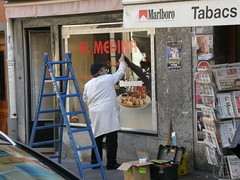How do businesses affect neighborhood crime rates? Some people would answer this question by asserting that the increased foot traffic that businesses bring to neighborhoods translates into more eyes to curb crime. According to others, residents withdraw into their homes to avoid crowds, which could make crimes more likely.
To test these opposing ideas, Christopher Browning and his Ohio State colleagues examined 1999-2001 rates of homicide, aggravated assault and robbery in 184 census tracts in Columbus, Ohio; and Psych Central News reported on their findings.
Neighborhoods that combine residential and business developments have lower levels of some types of violent crime[homocide and aggravated assault]…The findings were equally true in impoverished areas as they were in more affluent neighborhoods, possibly offering city planners and politicians a new option in improving crime-afflicted areas, according to the researchers.
But, neighborhood density also plays a role.
In sparsely populated neighborhoods, increases in business-residential density initially lead to more frequent violent crimes. However, once the building density reached a certain threshold, certain types of violent crime began to decline.
As Christopher Browning put it, “A residential neighborhood needs more than the addition of one or two businesses to see any positive impact on violent crime.”
The researchers are hopeful that bringing businesses into neighborhoods could help cut back on some violent crimes.


Comments 1
Wava Emperor — February 20, 2012
I think facebook will be much more important than any other social media site in the future.